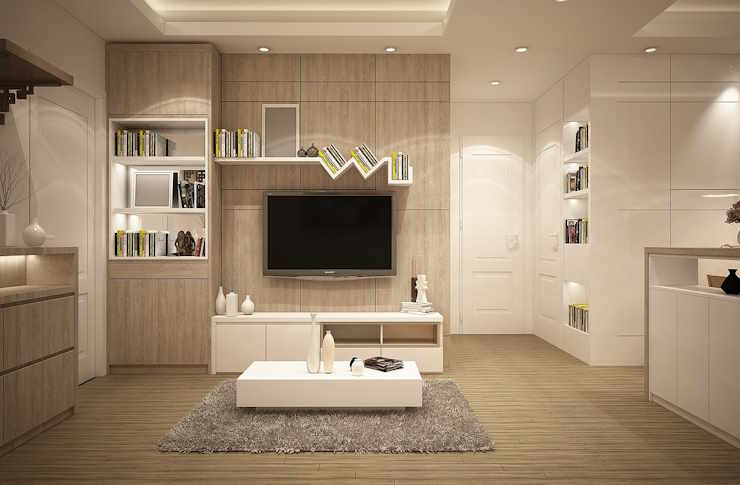Embracing Fractal Art in Home Decor: Nature's Patterns Reimagined
The world of interior design is constantly evolving, and one of the most intriguing trends to emerge in recent years is the incorporation of fractal art into home decor. This fascinating fusion of mathematics, nature, and aesthetics is captivating homeowners and designers alike, offering a fresh perspective on how we can bring the complexity and beauty of the natural world into our living spaces.

The Origins of Fractal Art
Fractal art is rooted in the mathematical concept of fractals, which are infinitely complex patterns that are self-similar across different scales. These patterns are abundant in nature, from the spiraling florets of a Romanesco broccoli to the branching of lightning bolts across the sky. The term fractal was coined by mathematician Benoit Mandelbrot in 1975, but the visual exploration of these patterns didn’t gain significant traction in the art world until the advent of computer technology in the 1980s.
As computers became more powerful, artists and mathematicians began to create stunning visual representations of fractal equations. These images, characterized by their infinite detail and mesmerizing complexity, quickly captured the imagination of the public. The ability to zoom into a fractal image and discover new patterns at every level of magnification created a sense of wonder and endless discovery.
Fractal Art’s Journey into Home Decor
The transition of fractal art from computer screens to home interiors has been a gradual but impactful process. Initially, fractal art was primarily limited to digital prints and posters. However, as printing technologies advanced and interior designers began to recognize the unique aesthetic value of fractals, these patterns started appearing on a wider range of home decor items.
Today, fractal designs can be found on wallpapers, textiles, furniture upholstery, and even architectural elements. The appeal lies in their ability to add depth, movement, and a touch of natural complexity to any space. Unlike traditional geometric patterns, fractals offer a more organic and fluid aesthetic that can complement a variety of interior styles.
The Psychology of Fractal Patterns
One of the most fascinating aspects of fractal art in home decor is its potential psychological impact. Research has shown that viewing fractal patterns can have a calming effect on the human mind. This is believed to be due to the fact that our brains are naturally attuned to recognizing and processing fractal patterns, which are ubiquitous in nature.
Studies have found that exposure to certain fractal patterns can reduce stress levels and improve focus. This makes fractal art not just a visually appealing choice for home decor, but potentially a tool for creating more relaxing and productive living environments. Designers are increasingly incorporating this knowledge into their work, strategically placing fractal elements in spaces where stress reduction and mental clarity are particularly beneficial.
Incorporating Fractal Art into Your Home
For those interested in embracing this trend, there are numerous ways to incorporate fractal art into home decor. One of the most dramatic options is to use fractal-patterned wallpaper as a feature wall. This can create a stunning focal point in a room, adding depth and visual interest without the need for additional artwork.
Textiles offer another versatile way to introduce fractal patterns. Curtains, throw pillows, and area rugs featuring fractal designs can add pops of intricate detail to a space. For a more subtle approach, consider fractal-inspired bedding or table linens. These items can introduce the beauty of fractals without overwhelming the existing decor.
Fractal Lighting: Illuminating Spaces with Complexity
One of the most innovative applications of fractal art in home decor is in lighting design. Fractal-inspired light fixtures can create mesmerizing displays of light and shadow, transforming the ambiance of a room. From pendant lights that cast intricate patterns on walls and ceilings to table lamps with fractal-patterned shades, these pieces serve as functional art installations.
Some designers are taking this concept even further by creating interactive fractal lighting systems. These high-tech fixtures allow users to adjust the complexity and scale of the fractal patterns, effectively changing the mood of a space with the touch of a button. This blend of art, mathematics, and technology represents the cutting edge of home lighting design.
The Future of Fractal Art in Home Design
As technology continues to advance, the possibilities for incorporating fractal art into home decor are expanding. 3D printing is opening up new avenues for creating fractal-inspired furniture and decorative objects. Meanwhile, augmented reality (AR) is enabling homeowners to visualize how fractal patterns might look in their spaces before committing to a design.
Looking ahead, we can expect to see more integration of fractal patterns in smart home technologies. Imagine wallpapers that can change their fractal patterns based on the time of day or the mood of the occupants. Or consider flooring that incorporates subtle fractal designs that respond to movement, creating an ever-changing visual landscape underfoot.
Balancing Complexity and Simplicity
While the allure of fractal art in home decor is undeniable, it’s important to strike a balance between complexity and simplicity. Too many intricate patterns can overwhelm a space and create visual chaos. Designers recommend using fractal elements as statement pieces or accents, allowing them to shine against simpler backdrops.
This balance can be achieved by pairing fractal patterns with solid colors and clean lines. For example, a fractal-patterned accent chair can be a stunning addition to a minimalist living room. Similarly, fractal art prints can add depth and interest to an otherwise plain wall without dominating the entire space.
Conclusion: A New Dimension in Home Aesthetics
The integration of fractal art into home decor represents a fascinating convergence of science, nature, and design. It offers a way to bring the infinite complexity and beauty of the natural world into our living spaces, creating environments that are both visually stunning and potentially beneficial to our well-being.
As this trend continues to evolve, it challenges us to rethink our approach to interior design. Fractal art invites us to look beyond traditional patterns and embrace a more organic, fluid aesthetic. It encourages us to see our homes not just as static spaces, but as dynamic environments that can reflect the intricate patterns found throughout the universe.
In embracing fractal art, we’re not just following a design trend – we’re participating in a larger exploration of how mathematics and nature can inform and enhance our living spaces. As we continue to discover new ways to incorporate these mesmerizing patterns into our homes, we open up a world of possibilities for creating truly unique and captivating interiors.





